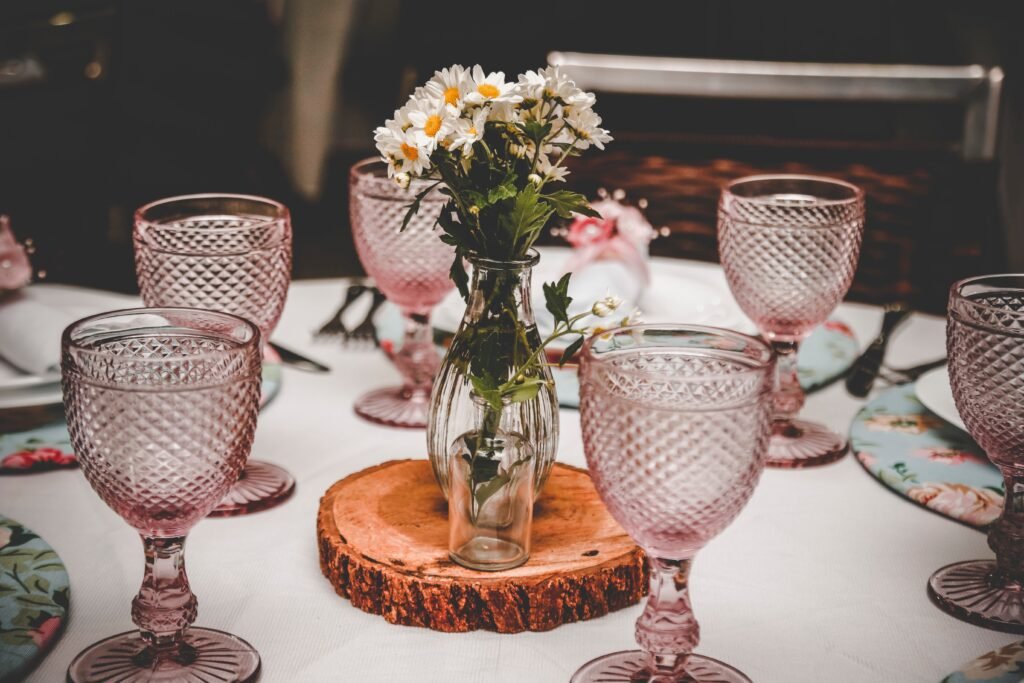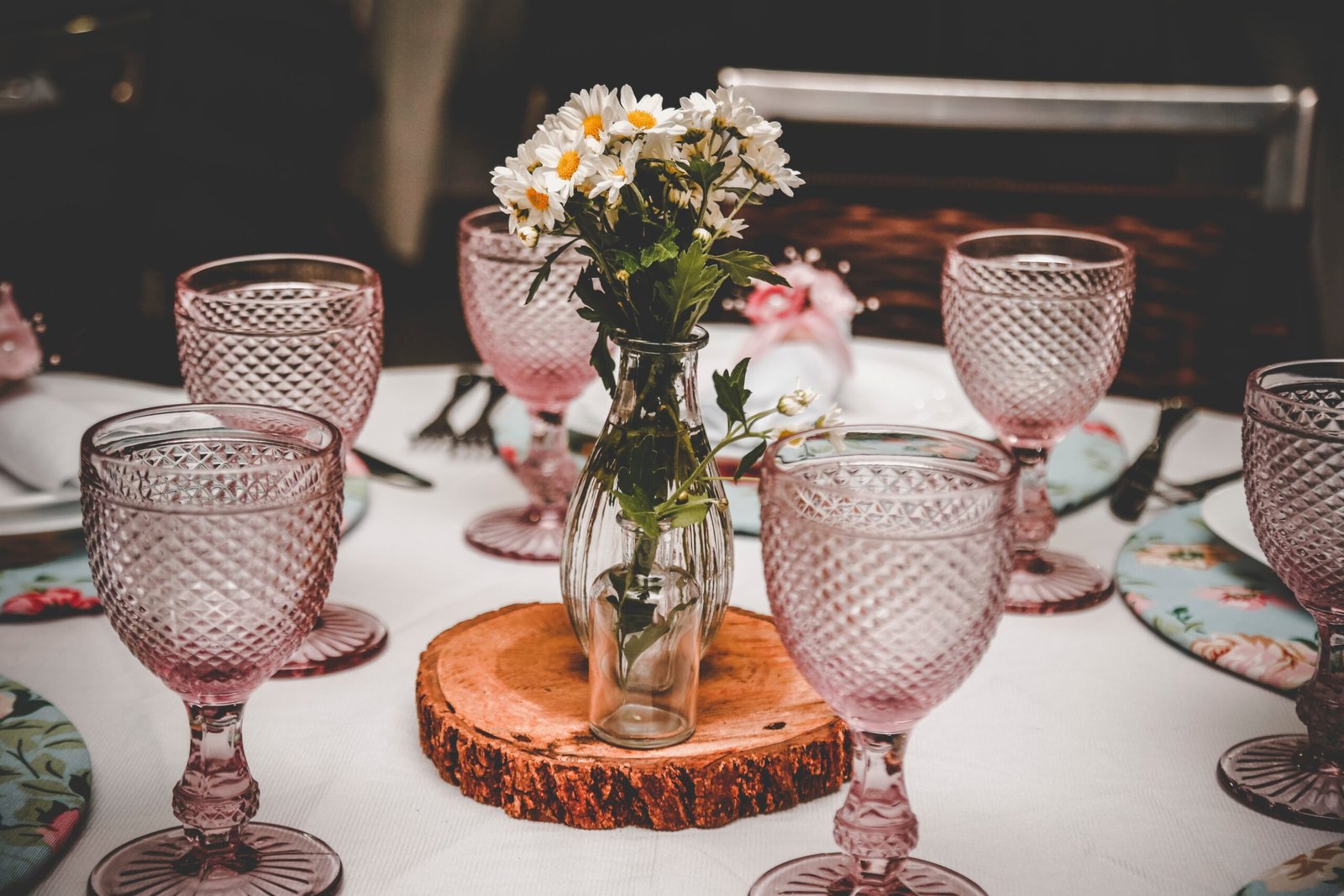Are you planning a wedding or event and looking to add a personal touch to your table decor? Creating a DIY centerpiece can be a fun and budget-friendly way to make your special occasion truly unforgettable. Whether you are a seasoned DIY enthusiast or a beginner looking to try something new, this article will provide you with tips and inspiration to help you make a stunning centerpiece that will be the talk of the town. From floral arrangements to unique and creative designs, you’ll find all the guidance you need to create the perfect centerpiece that reflects your individual style and adds a touch of charm to your celebration. So grab your crafting supplies and let’s get started on your masterpiece!

Choosing the theme and style of the centerpiece
When it comes to creating a DIY centerpiece for a wedding or event, the first step is to consider the overall theme and style of the occasion. Take into account the colors, decor, and ambiance you envision for the event. This will help you choose a centerpiece that complements the overall aesthetic and creates a cohesive look.
Additionally, think about the vibe you want the centerpiece to convey. Are you aiming for a romantic and elegant atmosphere or a more relaxed and rustic feel? Determining the desired vibe will guide your decisions regarding the centerpiece’s design, materials, and color scheme.
Another important aspect to consider is the size and shape of the centerpiece. Assess the tables or spaces where the centerpieces will be placed and determine how much space is available. Remember to strike a balance between the centerpiece’s size and the available room to ensure it doesn’t overpower the table or obstruct guests’ view.
Lastly, choose a color scheme that complements the event’s theme. Consider the primary colors and additional accents used in the overall decor and select colors that harmonize with the surroundings. A well-coordinated color scheme will make your centerpiece stand out and enhance the overall visual appeal of the event.
Selecting the main focal point
Deciding on the main element of the centerpiece is crucial in creating a visually captivating and impactful arrangement. One popular and timeless choice for a focal point is flowers. Whether you opt for a single type of flower or an assortment of blooms, flowers add natural beauty and elegance to any centerpiece. Choose flowers that match the overall theme and colors of the event to create a harmonious design.
Alternatively, you can explore alternative focal points like candles or lanterns. These options bring a warm and intimate ambiance to the centerpiece, perfect for romantic or cozy-themed events. Candles can be placed in decorative holders or lanterns to add an element of interest and create a captivating focal point.
For a personal touch, incorporate personal items or meaningful objects into the centerpiece. This could include sentimental trinkets, photographs, or items that represent the couple or event’s unique story. By incorporating these personal elements, the centerpiece becomes a reflection of the individuals or occasion it celebrates.
Gathering necessary materials and supplies
Before diving into creating your DIY centerpiece, make a list of materials needed based on the chosen centerpiece design. Consider the specific requirements of your centerpiece, such as flowers, foliage, containers, and decorative elements. Be sure to also factor in any additional tools you may need, such as scissors, floral tape, and wire cutters.
In addition to the essential materials, decide on any additional items that will enhance the centerpiece’s visual appeal. This could include ribbons, strings, or other decorative elements that complement the chosen theme and style. By planning ahead and gathering all the necessary materials, you’ll have everything at your fingertips when it’s time to assemble the centerpiece.
Assembling the centerpiece
Now that you have all the materials and supplies gathered, it’s time to start assembling the centerpiece. Begin by preparing the container or base for the centerpiece. Ensure that it is clean and suitable for holding the arrangement securely. You may want to add floral foam or use water tubes to keep your flowers hydrated throughout the event.
Next, arrange the main focal point in the center of the container or base. Whether it’s a bouquet of flowers, a cluster of candles, or a unique personal item, positioning the main focal point correctly is essential in drawing attention and creating a visually striking centerpiece.
To add balance and visual interest, incorporate complementary elements around the main focal point. Consider using different heights and textures to create dimension in the arrangement. Add foliage, smaller flowers, or other decorative elements that suit the chosen theme and style. Play with different combinations until you achieve a visually pleasing arrangement.

Adding finishing touches
To further enhance the centerpiece’s aesthetic, consider incorporating additional decorative elements. These could be items like pearls, beads, or sequins that add a touch of glamour to the arrangement. Attach ribbon or string around the centerpiece for a polished and refined look. These finishing touches will add an extra layer of elegance and sophistication to your centerpiece.
While adding embellishments, ensure that the centerpiece remains secure and stable. Double-check that all items are properly attached and won’t easily come loose. This will prevent any mishaps during transportation or at the event itself, providing peace of mind that your centerpiece will stay intact throughout the festivities.
Ensuring longevity and freshness
To ensure your centerpiece stays fresh and vibrant throughout the duration of the event, follow a few key steps. First, prevent wilting flowers by keeping them hydrated. Consider using water tubes or floral foam to provide a water source for the flowers in the centerpiece. This will help them maintain their freshness and vitality for longer.
Additionally, it’s important to keep the centerpiece away from direct sunlight and extreme temperatures. Exposure to excessive heat or cold can cause flowers to wilt or decorative elements to become damaged. Find a suitable spot at the venue that offers appropriate lighting and temperature conditions to preserve the centerpiece’s quality.
If you’re using fresh flowers, spritzing them with water intermittently can help maintain moisture and prolong their freshness. Be sure not to oversaturate the flowers, as this could lead to water damage. A light misting will suffice in keeping them looking their best.

Transporting and setting up the centerpiece
When it comes to transporting your DIY centerpiece to the venue, it’s essential to plan ahead for a safe and seamless journey. Determine the best way to transport the centerpiece, considering its size, fragility, and stability. If certain elements are fragile, use tissue paper or bubble wrap to protect them from damage during transportation.
Once you arrive at the venue, carefully place the centerpiece in its designated spot on the table. Take care not to disturb the arrangement or any other decorations on the table. It may be helpful to have a clear vision of where the centerpiece will go beforehand to ensure it fits perfectly into the overall table design.
After setting up the centerpiece, take a moment to assess its appearance. Adjust any elements if necessary to ensure the centerpiece looks its absolute best. Fine-tuning any details will help create a flawless presentation that will impress guests and add to the overall ambiance of the event.
Exploring alternative centerpiece ideas
While traditional floral centerpieces are popular and beautiful, there are numerous alternative options to consider for a unique twist. One idea is to forgo flowers altogether and opt for non-floral centerpieces. This could involve using fruits, vegetables, or foliage to create a natural and organic arrangement. This alternative approach can bring a fresh and unexpected touch to the tablescape.
Another option for an alternative centerpiece is to incorporate candles or lanterns. Candles create an intimate and romantic ambiance and can be incorporated in various ways. Whether you choose to use individual candles, pillar candles, or floating candles, they can add a warm and inviting glow to the event. Similarly, lanterns can provide a cozy and whimsical feel and can be filled with flowers or other decorative elements.
To add an eco-friendly touch to your centerpiece, consider utilizing recycled or repurposed items. This could involve incorporating elements such as vintage bottles, tin cans, or reclaimed wood. Not only will this reduce waste, but it will also add a unique and rustic charm to the centerpiece. Get creative and explore different materials and objects to create a centerpiece that reflects your dedication to sustainability.
Personalizing the centerpiece
Adding personal touches to the centerpiece can make it even more special and meaningful. Consider including elements that hold personal significance for the couple or event. This could involve incorporating photos, quotes, or sentimental items that represent cherished memories or important moments. By incorporating these personal elements, the centerpiece becomes a reflection of the individuals or occasion it celebrates, adding an extra layer of emotional connection.
Additionally, customizing the centerpiece to match the couple’s interests or shared memories can add a personal and intimate touch. For example, if the couple shares a love for travel, incorporate elements like vintage maps, globes, or postcards into the centerpiece. By infusing these personalized elements, the centerpiece becomes a true representation of the couple’s unique story.
Don’t be afraid to incorporate traditional or cultural elements into the centerpiece. If the couple or event has specific cultural customs or traditions, consider integrating symbols or motifs that represent those practices. This can help create a centerpiece that not only celebrates the couple but also pays homage to their heritage and background.
Budget-friendly centerpiece alternatives
Creating a DIY centerpiece doesn’t have to break the bank. There are plenty of cost-effective options to consider that still result in a stunning centerpiece design. One way to save on costs is by using seasonal or locally sourced flowers. Seasonal blooms tend to be more readily available and affordable, ensuring that you stay within your budget while still achieving a beautiful centerpiece.
Another budget-friendly approach is to utilize existing items or repurpose household objects. Look around your home for containers or vases that can be transformed into unique centerpiece bases. Additionally, consider repurposing items like mason jars, wine bottles, or even simple cans to hold flowers or other decorative elements. Not only will this save money, but it will also add a creative and personal touch to your centerpiece.
Consider opting for minimalist or simple designs that require fewer materials. Sometimes, less is more, and a clean and elegant design can be just as impactful as an elaborate one. Simplifying your centerpiece can help reduce costs while still achieving a stylish and visually pleasing result.
In conclusion, making a DIY centerpiece for a wedding or event is a creative and rewarding endeavor. By considering the theme and style of the occasion, selecting a focal point, gathering necessary materials, and following the steps to assemble and personalize the centerpiece, you can create a truly unique and memorable centerpiece that will impress guests and add beauty to any event. With a little imagination, planning, and attention to detail, your DIY centerpiece will be the highlight of the occasion without breaking the bank.

